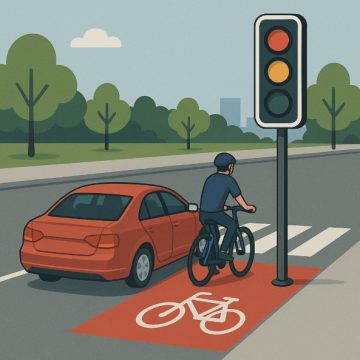Reform of Driver Liability: Clarifications on Liability in Accidents Involving Vulnerable Road Users
Welcome to my weekly article, which this week is dedicated to the reform of driver liability, set to come into effect on January 1, 2025. In a previous article, I outlined the major changes brought about by this reform. Today, I will delve deeper into a key aspect: the liability of drivers in accidents involving vulnerable road users, such as pedestrians, cyclists, and children.
This reform raises important questions, particularly for drivers who will have to adapt to stricter liability in certain accident cases, even when no personal fault is demonstrated. Here’s how this new approach to liability differs from the current compensation system for weak road users and what its concrete implications are for drivers and victims.
Current Context: Compensation for Weak Road Users
Currently, the law of November 21, 1989 imposes objective liability on drivers for bodily harm suffered by weak road users (pedestrians, cyclists, passengers outside the vehicle). This liability allows victims to obtain compensation without needing to prove fault on the part of the driver. However:
- This compensation is limited to bodily harm and does not cover material damages.
- It focuses on the protection of weak road users without formally recognizing the driver’s liability.
What Changes on January 1, 2025: Towards Broader Liability
The 2025 reform does not create a new specific objective liability for vulnerable road users but strengthens and clarifies drivers’ responsibilities in certain cases. This evolution is mainly based on:
- Liability for defective objects (Article 6.16), which could apply to vehicles in cases where a defect causes an accident. This system may lead to broader coverage of damages, including material damages, if a vehicle defect is involved.
- A stricter framework for the safety of vulnerable road users, encouraging heightened vigilance in areas with high pedestrian or child density.
Liability in Accidents Caused by Vehicle Defects
Liability for defective objects means that in the event of an accident involving a technical defect in the vehicle (brakes, tires, etc.), the driver could be held liable without fault. Unlike the current system of compensation for weak road users, this new rule could cover material damages in addition to bodily harm, depending on the nature of the defect. This represents a step forward in protecting vulnerable road users and compensating victims.
Implications for Drivers
This broader liability means that drivers must anticipate increased responsibility in certain contexts, even when they follow all driving rules. This translates into:
- Heightened vigilance in areas frequented by pedestrians and cyclists.
- Strict vehicle maintenance to avoid defects that could cause accidents.
- A review of insurance policies to ensure their coverage accounts for these new risks.
Impact on Evidence and Procedures
The reform reduces the burden of proof for victims in accidents involving a defect. Vulnerable road user victims will be able to obtain compensation more easily if they demonstrate the existence of a vehicle defect. For drivers, this simplification of procedures for victims could imply automatic liability in cases where a defect is proven.
Conclusion
This reform marks a significant change in driver liability by complementing the compensation system for weak road users with broader recognition of technical vehicle defects. While the new rule does not create generalized objective liability, it expands drivers’ obligations regarding safety and vigilance towards vulnerable road users and imposes strict liability in cases of vehicle defects.
This evolution represents progress towards better victim protection and increased responsibility for drivers in road safety matters. To be prepared by January 1, 2025, drivers are encouraged to inform themselves and consult their insurer.
Stay updated on these legislative developments to be fully ready by January 1, 2025. For any questions or legal assistance, I am at your disposal.
Stay updated on the evolution of this legislation to be prepared by January 1, 2025. For any questions or legal assistance, feel free to reach out.




